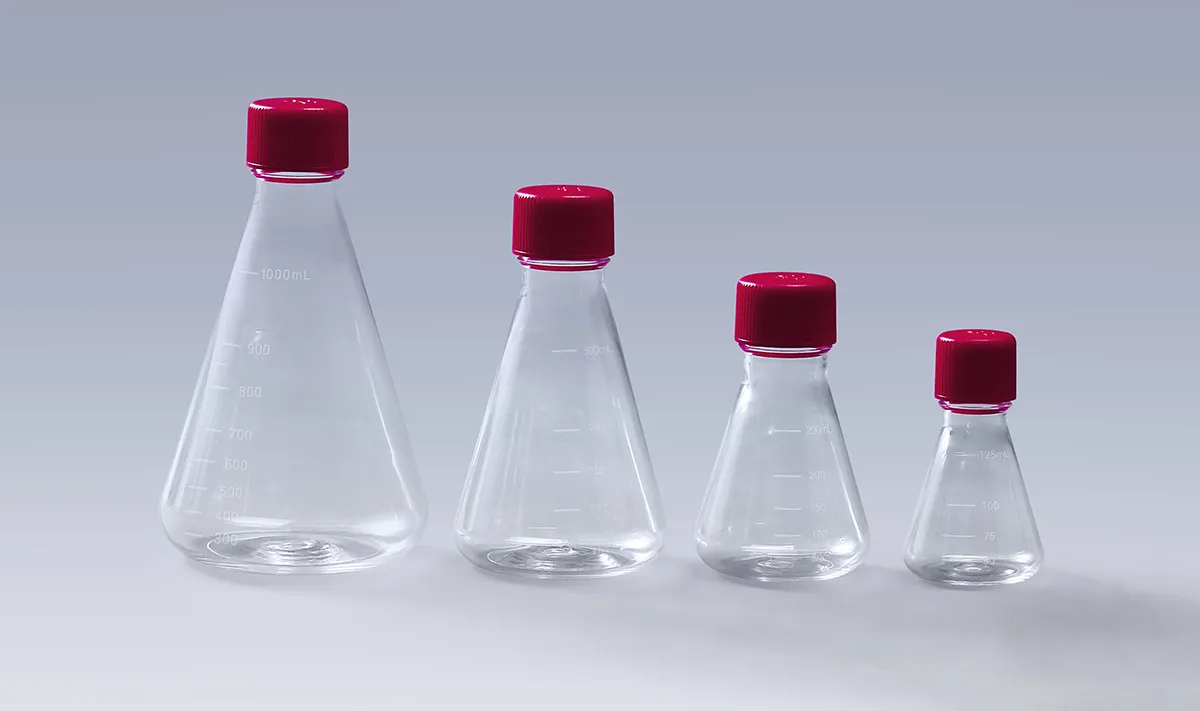The distinctive Erlenmeyer flask, a staple in laboratories worldwide, possesses unique features that make it a versatile tool for various scientific applications. Recognized by its conical shape and narrow neck, the Erlenmeyer flask goes beyond mere aesthetics, offering functionalities that cater to the precision and efficiency required in scientific experiments. Let's delve into the key features of this iconic flask, exploring its design, materials, and real-life applications.

Anatomy of an Erlenmeyer Flask
1. Conical Shape:
The conical design of the Erlenmeyer flask is a defining feature. The tapered sides allow for easy swirling and mixing of liquids without the risk of spills, making it ideal for tasks such as titration.
2. Narrow Neck:
The narrow neck serves multiple purposes. It minimizes evaporation and prevents the escape of volatile substances. Additionally, the small opening enables controlled pouring and facilitates the use of stoppers and other accessories.
3. Flat Bottom:
Stability is crucial in laboratory settings. The flat bottom of the Erlenmeyer flask ensures secure placement on surfaces, preventing accidental tipping and ensuring accurate measurements.
4. Graduated Markings:
Most Erlenmeyer flasks come with graduated markings along the side. These measurements allow scientists to precisely monitor the volume of liquids being mixed, reacted, or titrated within the flask.
5. Durability:
Erlenmeyer flasks are typically made from borosilicate glass, a material known for its resistance to thermal shock and chemical corrosion. This durability ensures the flask can withstand various experimental conditions.
6. Easy-to-Clean Design:
The simple design of the Erlenmeyer flask makes it easy to clean, a crucial aspect in laboratory work. The smooth, unembellished surface facilitates thorough cleaning and minimizes the risk of contamination.
Real-Life Applications
1. Chemical Mixing and Reactions:
Erlenmeyer flasks are extensively used in chemistry laboratories for mixing chemicals and conducting reactions. The conical shape allows for efficient stirring, while the narrow neck prevents unintended chemical release.
2. Titration:
The graduated markings on the flask make it ideal for titration experiments. Precise volume measurements are crucial in titration processes, and the Erlenmeyer flask ensures accuracy in these procedures.
3. Cell Culture:
In biological laboratories, Erlenmeyer flasks serve in cell culture processes. The conical shape accommodates the swirling motion required for homogeneous cell distribution, supporting cell growth and viability.
4. Media Preparation:
Scientists use Erlenmeyer flasks for preparing culture media in microbiology. The flask's design facilitates efficient mixing of ingredients while maintaining a sterile environment, crucial for successful microbial cultivation.
5. Solvent Evaporation:
The narrow neck of the Erlenmeyer flask minimizes evaporation during solvent-based experiments. This feature is essential in processes where maintaining precise concentrations is imperative.


Comments
Please Join Us to post.
0